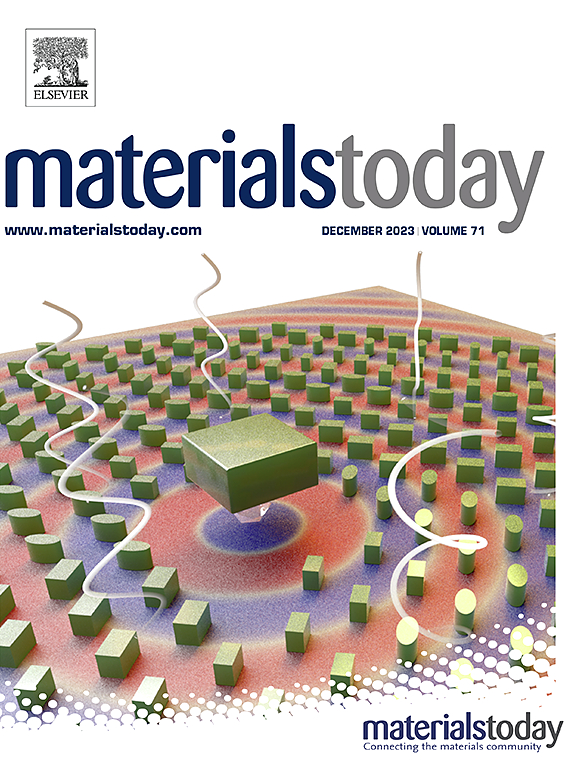Selective nitrogen reduction reaction on single-atom centers of molybdenum-based MXenes by pulsing the electrochemical potential
IF 21.1
1区 材料科学
Q1 MATERIALS SCIENCE, MULTIDISCIPLINARY
引用次数: 0
Abstract
Electrocatalytic reduction of dinitrogen is a promising route for sustainable production of ammonia, although the selectivity challenge of the competing nitrogen reduction (NRR) and hydrogen evolution reactions in aqueous electrolytes has not yet been solved. Single-atom catalysts (SACs) offer the hope of bridging this gap because they exhibit unique electronic structure and reactivity in catalytic transformations compared to conventional bulk materials. In addition, potential pulse experiments have shown that they promote the formation of kinetically unfavorable products by efficiently modulating the electrolyte structure at the solid–liquid interface. So far, a combination of SACs and potential pulse experiments for the NRR is mutually exclusive, since SACs are likely to be degraded during the anodic potential pulse due to metal dissolution. Using density functional theory calculations in a grand canonical framework, we demonstrate in the present communication that molybdenum-based MXenes are able to overcome this limitation: compared to traditional SACs, MXenes form single-atom centers during the anodic potential pulse, and their SAC-like structure allows the selectivity to be directed to ammonia instead of gaseous hydrogen during the cathodic pulse. Our study paves the way for the development of high-performance materials with in-situ formed SAC-like sites to enable advances in selective catalytic transformations under applied bias.
利用脉冲电化学电位研究钼基MXenes单原子中心的选择性氮还原反应
二氮的电催化还原是一种很有前途的可持续生产氨的途径,尽管在水溶液中氮还原(NRR)和析氢反应的选择性挑战尚未解决。单原子催化剂(SACs)提供了弥合这一差距的希望,因为与传统的大块材料相比,它们在催化转化中表现出独特的电子结构和反应活性。此外,电位脉冲实验表明,它们通过有效调节固液界面处的电解质结构,促进了动力学不利产物的形成。到目前为止,由于SACs很可能在阳极电位脉冲期间由于金属溶解而降解,因此将SACs与NRR的电位脉冲实验相结合是相互排斥的。在一个大规范框架中使用密度泛函理论计算,我们在当前的通信中证明了基于钼的MXenes能够克服这一限制:与传统的sac相比,MXenes在阳极电位脉冲期间形成单原子中心,并且它们的类sac结构允许在阴极脉冲期间选择性指向氨而不是气态氢。我们的研究为开发具有原位形成的sac样位点的高性能材料铺平了道路,从而使应用偏压下的选择性催化转化取得进展。
本文章由计算机程序翻译,如有差异,请以英文原文为准。
求助全文
约1分钟内获得全文
求助全文
来源期刊

Materials Today
工程技术-材料科学:综合
CiteScore
36.30
自引率
1.20%
发文量
237
审稿时长
23 days
期刊介绍:
Materials Today is the leading journal in the Materials Today family, focusing on the latest and most impactful work in the materials science community. With a reputation for excellence in news and reviews, the journal has now expanded its coverage to include original research and aims to be at the forefront of the field.
We welcome comprehensive articles, short communications, and review articles from established leaders in the rapidly evolving fields of materials science and related disciplines. We strive to provide authors with rigorous peer review, fast publication, and maximum exposure for their work. While we only accept the most significant manuscripts, our speedy evaluation process ensures that there are no unnecessary publication delays.
 求助内容:
求助内容: 应助结果提醒方式:
应助结果提醒方式:


